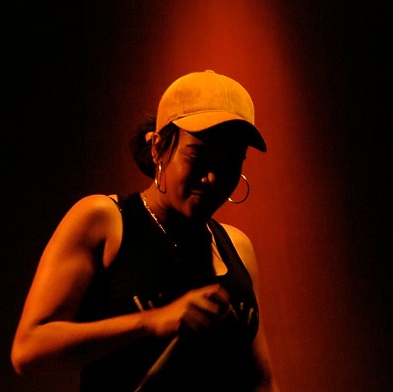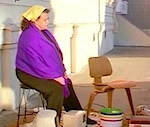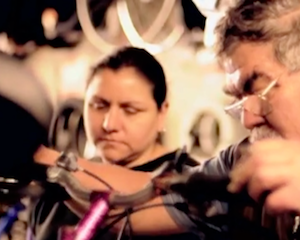East Bay’s Bang Data is sure loves California, and if your city didn’t get a shout out in this video, go back and listen again.
PREVIOUSLY ON BANG DATA:
Mas…Oakland’s Bang Data is all about the ‘Amor Califas California ❤️’ (video)
East Bay’s Bang Data is sure loves California, and if your city didn’t get a shout out in this video, go back and listen again.
PREVIOUSLY ON BANG DATA:
Mas…Oakland’s Bang Data is all about the ‘Amor Califas California ❤️’ (video)
This video claims the best tacos and burritos in San Francisco are served at La Taqueria in the Mission. Four hundred pounds of carne asada every day can’t be wrong, amirite?
We borrowed the title of this Tower of Power mega-hit for POCHO Jefe Lalo Alcaraz’ toon about San Francisco hipsters so it’s only fair we show our true love for the Bay Area in general and TOP in particular.
Check out TOP’s performance of What Is Hip? live at the Montreux Jazz Festival in 2006 (with guest star Carlos Santana.)
By the way, these are some hip lyrics:
So you want to jump out your trick bag
And ease on into a hip bag
But you ain’t just exactly sure what’s hip
So you start to let your hair grow
Spend big bucks to cop you a wardrobe
But somehow you know there’s much more to the tripMas…‘What Is Hip?’ Tower of Power and Carlos Santana (video, lyrics)
Anyone can make a video of San Diego low riders hopping, and lowrider fans partying. But not everyone can set it to operatic music. Filmmaker Gloria Morán, of San Francisco, did just that.
PREVIOUSLY ON LOWRIDERS:
We missed Brown and Proud when the San Francisco band Los Mocosos released this tune in 1998 — 15 pinche years ago! That’s why it’s on repeat today.
Thanks to Texano78704 for the tip:
 (PNS reporting from SAN FRANCISCO) Marce “More-Say” Figueroa discovered her talent for poetry this time last year when her roommate told her she was talking in her sleep.
(PNS reporting from SAN FRANCISCO) Marce “More-Say” Figueroa discovered her talent for poetry this time last year when her roommate told her she was talking in her sleep.
After that conversation, Figueroa started writing down the random words that popped into her head when she woke up. Soon, she realized what she was really writing was poetry — and April is National Poetry Month!
“Angie my roommate was all, like, ‘Wow Marce, that’s great,’” she told PNS. “She was so inspired that I started writing more poems, and after a reading in the City College of San Francisco cafeteria, I changed my name to More-Say, instead of Marce, because it’s like poetry, you know?”
Mas…Latina discovers talent for poetry by saying random words slowly
(PNS reporting from FLUSHING, N.Y.) This just in: Long Island dry cleaner Beau Riqua was an unhappy man this morning when he prevented nurses from administering an enema prescribed by his doctor. Riqua, who was visiting internist Dr. Lee Cuado with concerns about bloating, was upset that Cuado, a longtime friend, recommended this delicate procedure.
“That charlatan is just getting revenge because he lost $500 to me on a Super Bowl bet,” says Riqua, “so now he’s on my list. Go Ravens!”

DIEZ tells the story of a molded plywood Eames chair and its journey over the course of a few days in San Francisco, a journey that starts when the chair is momentarily left in front of an upscale gallery, and an older Mexican woman takes the chair, mistaking the modern design icon for trash. This random event sets in motion the chair’s journey and surprising transformation.
DIEZ deconstructs; literally and figuratively – an Eames chair. The story illustrates in a whimsical fashion how the value of material objects can have different, but no less important, meaning to different people. DIEZ shows the many different realities that exist in the same neighborhood and the contrasting values that accompany them. Ultimately DIEZ asks the question; when divided into its DIEZ (ten) basic components, what value does an Eames chair really have?
 |
 |
A bicycle is just basic transportation, really. Wheels, metal tubes, chains, gears, rubber, grease, paint if you’re lucky, a basket and maybe a bell. Yet sometimes it’s a vehicle that binds fathers and daughters together.
Brasil sends us the multi-award-winning O Plantador de Quiabos (the okra planter) in Portuguese with English subtitles and from San Francisco’s Mission District comes a documentary that introduces us to the family behind La Bicicleta Vieja (the old bicycle), Spanish with English subtitles.
Enjoy these two shorts – our Sabado Pochonte Double Feature!
Mas…Video Double Feature: Sometimes a bicycle is more than a bicycle
Ask Me, Don’t Tell Me (1961, 22 mins.) Adult suspicion, pompadours, cigarettes, chromed cars, pool halls, the jitterbug and pinball machines conspire to turn kids into juvenile delinquents, but earnest do-gooders can save the day! Great rock ‘n’ roll soundtrack and candid footage make late 1950s early 1960s gang life look sweet — in the days before guns and drive-bys.
The camera follows the day-to-day lives of San Francisco teenage gang members (AKA “jacket clubs”) — white, Asian, Mexican, black — and the unfriendly world they inhabit. The documentary was produced by the American Friends Service Committee, which wanted to set the kids on the right path with community service projects.
Frankie Quinones — who was unforgettable as the star of The Cholo Whisperer — returns to the YouTube screen as Carmelita, the diva on a budget. She is So Eh-Spicy. (NSFW language.)